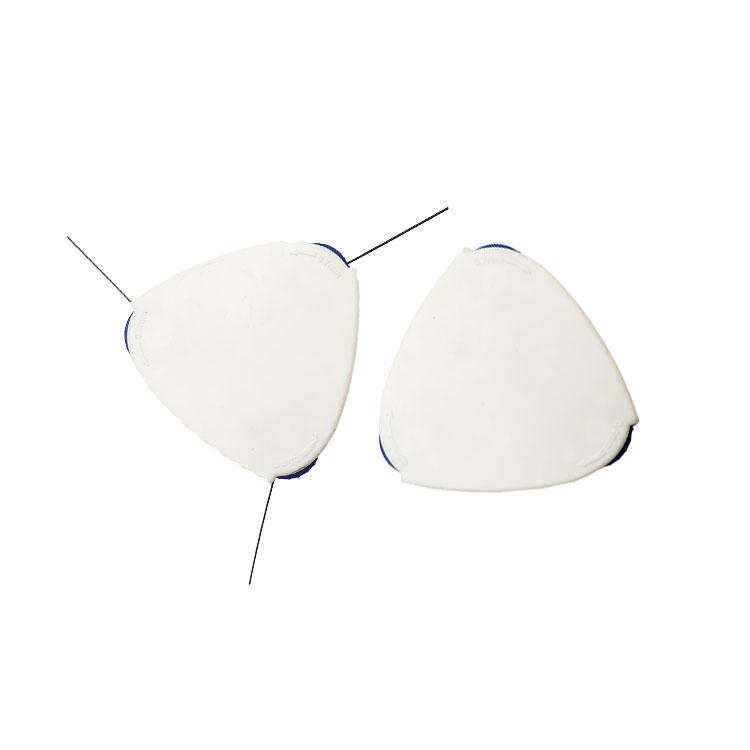Material: ABS with Nylon Monofilament
Size: 6.3*1.4(thickness) cm
| Availability: | |
|---|---|
| Quantity: | |
PP-MD5703
This triangular diabetic foot test monofilament features a unique design with a testing needle at each corner. This design enhances the coverage of the test, allowing for a more comprehensive evaluation of foot sensation. Healthcare providers can use the different angles of the monofilament to gently touch various areas of the patient's foot, assessing their sensory response. This multi-angle testing approach helps in promptly detecting abnormalities in foot sensation and taking necessary preventive measures.
This triangular diabetic foot test monofilament features a unique design with a testing needle at each corner. This design enhances the coverage of the test, allowing for a more comprehensive evaluation of foot sensation. Healthcare providers can use the different angles of the monofilament to gently touch various areas of the patient's foot, assessing their sensory response. This multi-angle testing approach helps in promptly detecting abnormalities in foot sensation and taking necessary preventive measures.






Hold the triangular diabetic foot test monofilament securely by its handle.
With gentle pressure, touch different areas of the patient's foot using the various corners of the monofilament.
Ensure consistent pressure is applied during each touch to obtain accurate results.
Observe the patient's responses closely to assess their sensation levels.
Document any areas on the foot where the patient exhibits reduced sensitivity or lack of sensation.
Discuss your findings with the patient, providing necessary guidance and recommendations.
Hold the triangular diabetic foot test monofilament securely by its handle.
With gentle pressure, touch different areas of the patient's foot using the various corners of the monofilament.
Ensure consistent pressure is applied during each touch to obtain accurate results.
Observe the patient's responses closely to assess their sensation levels.
Document any areas on the foot where the patient exhibits reduced sensitivity or lack of sensation.
Discuss your findings with the patient, providing necessary guidance and recommendations.